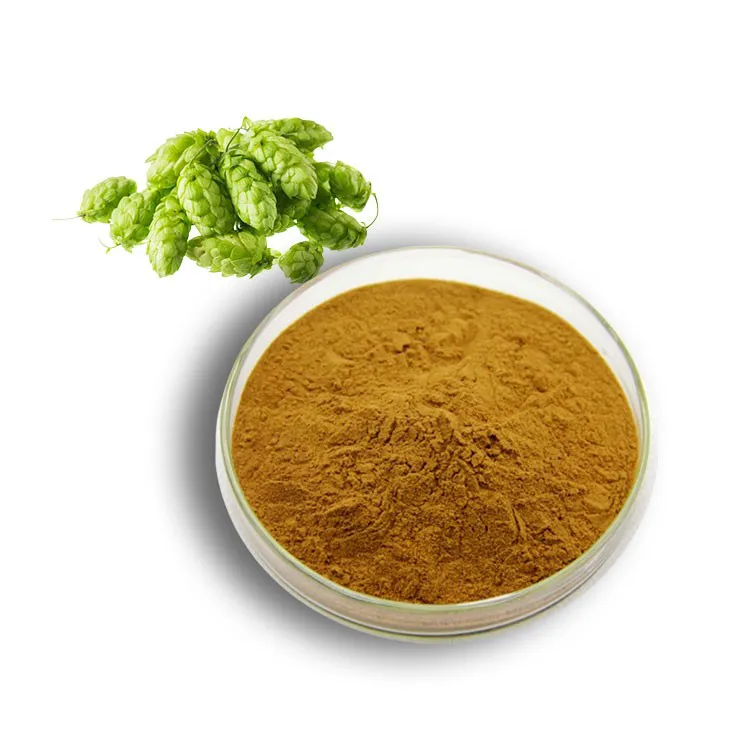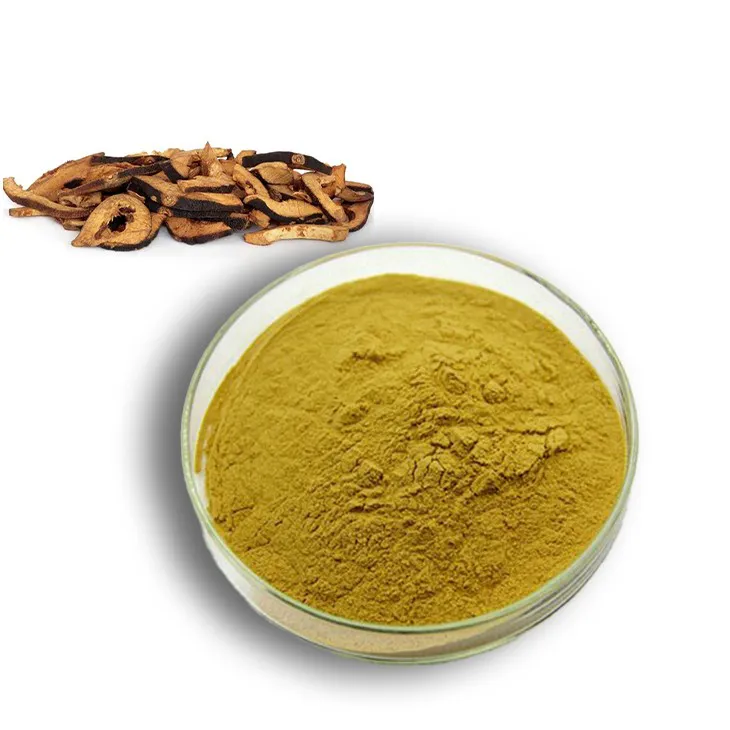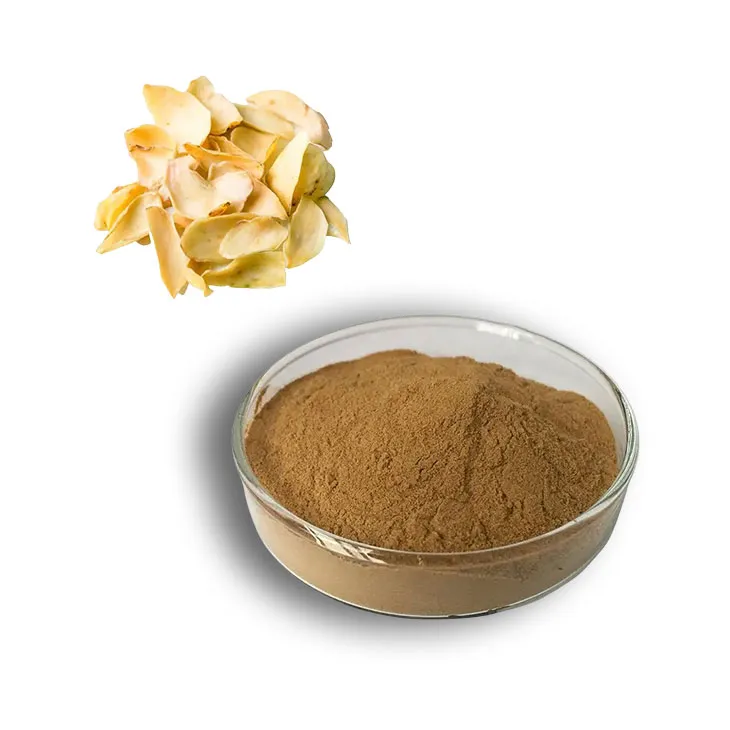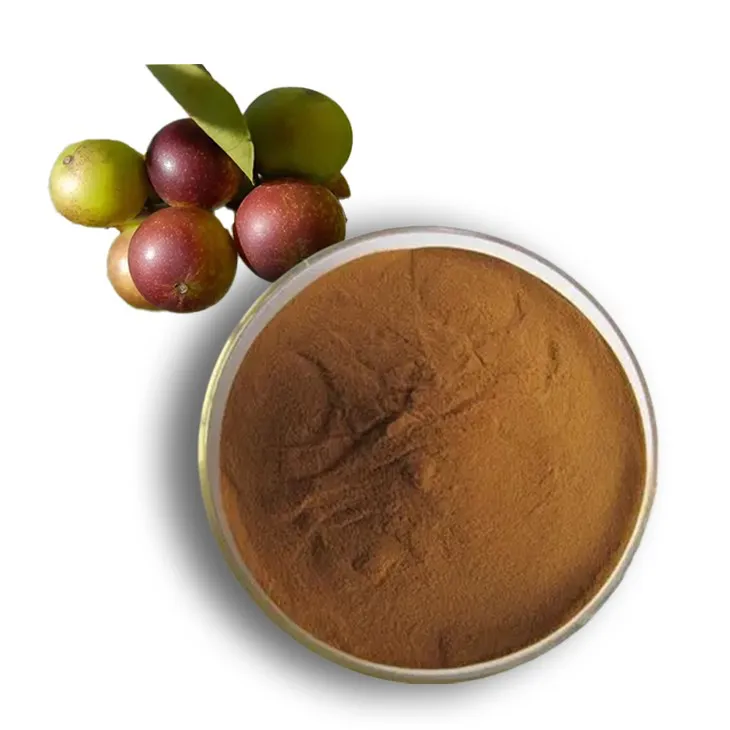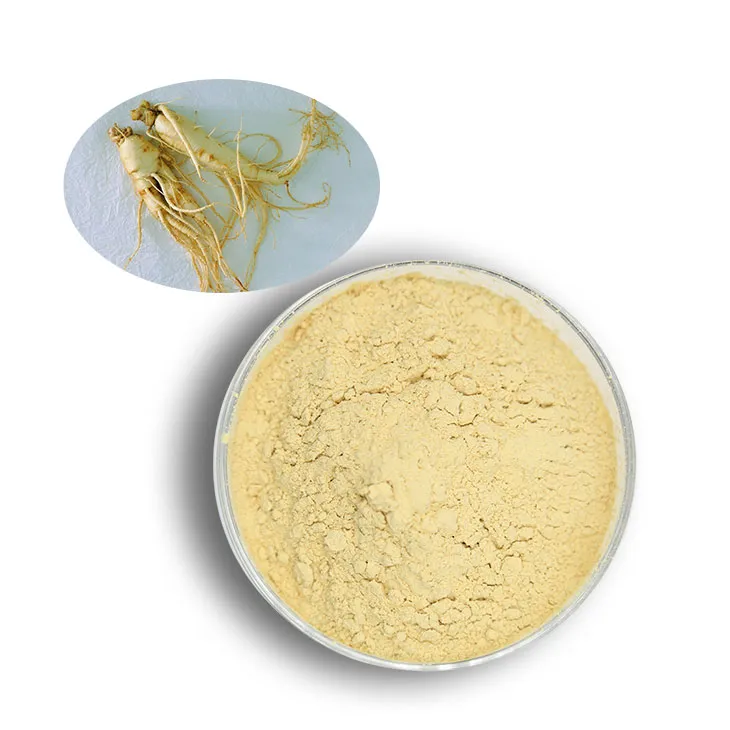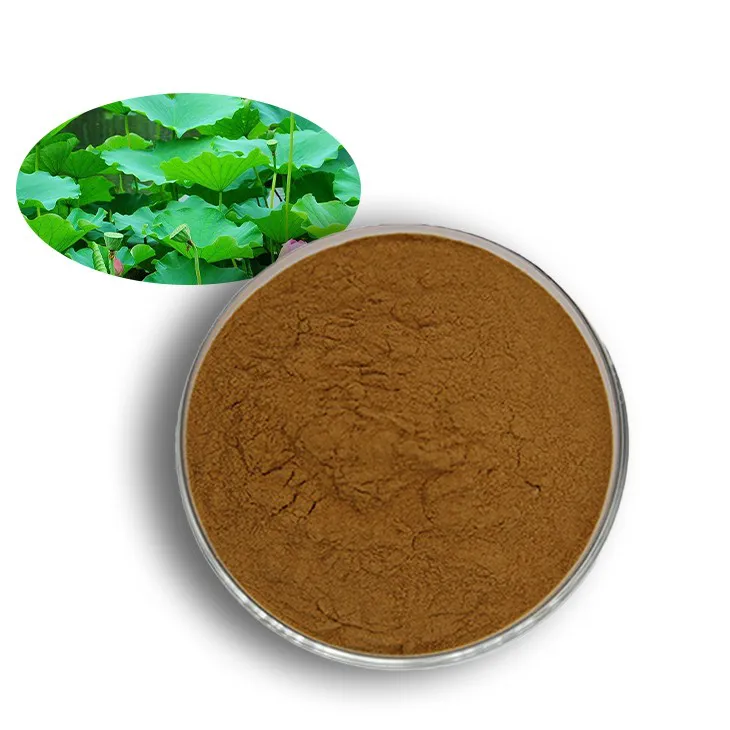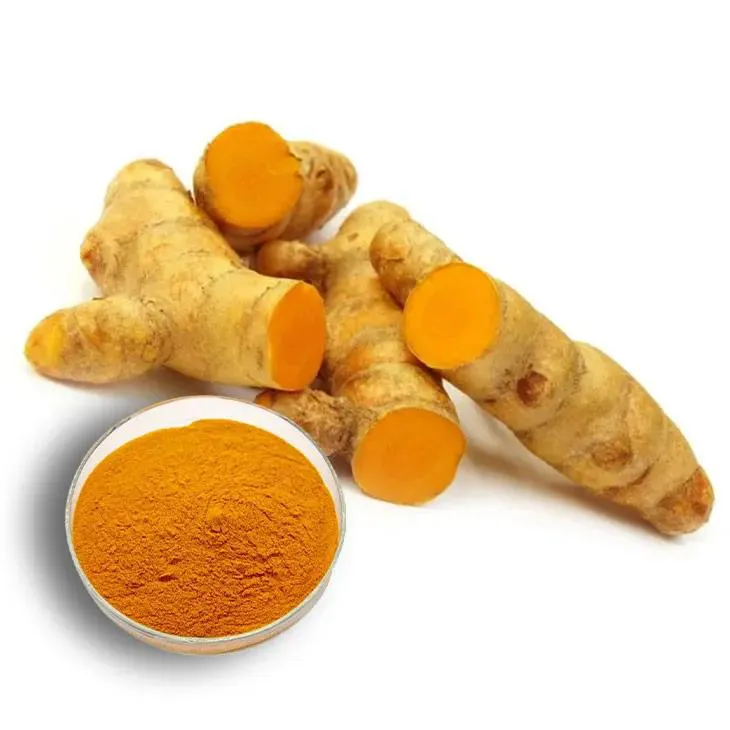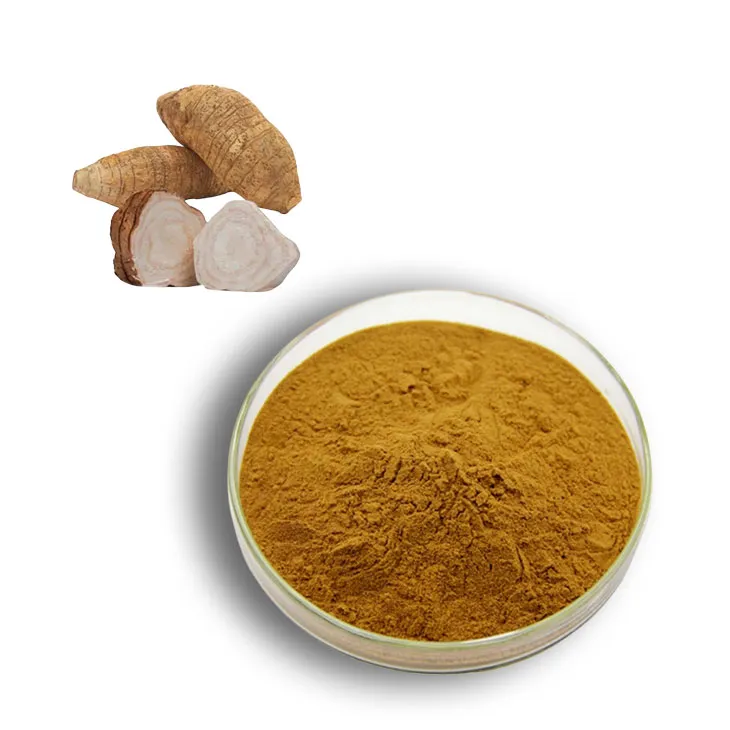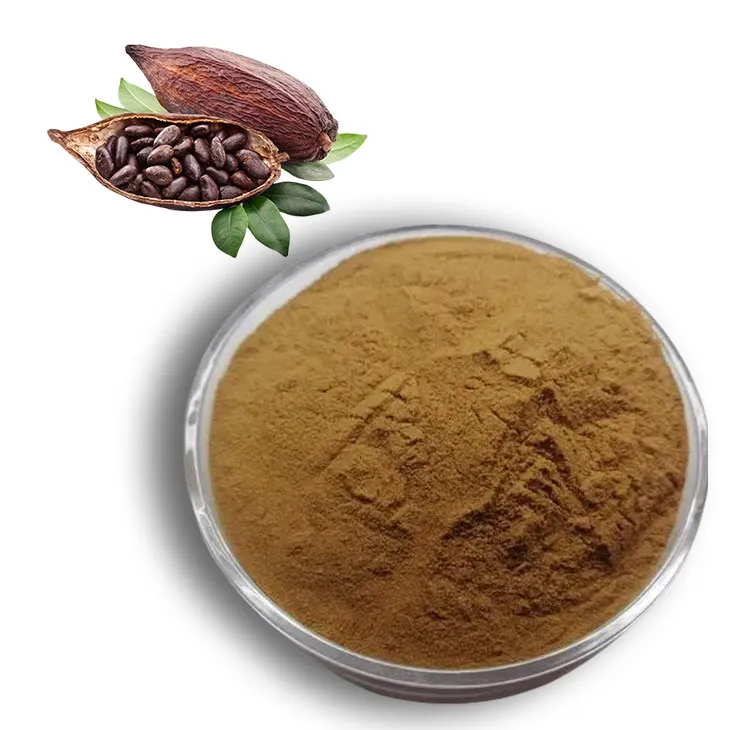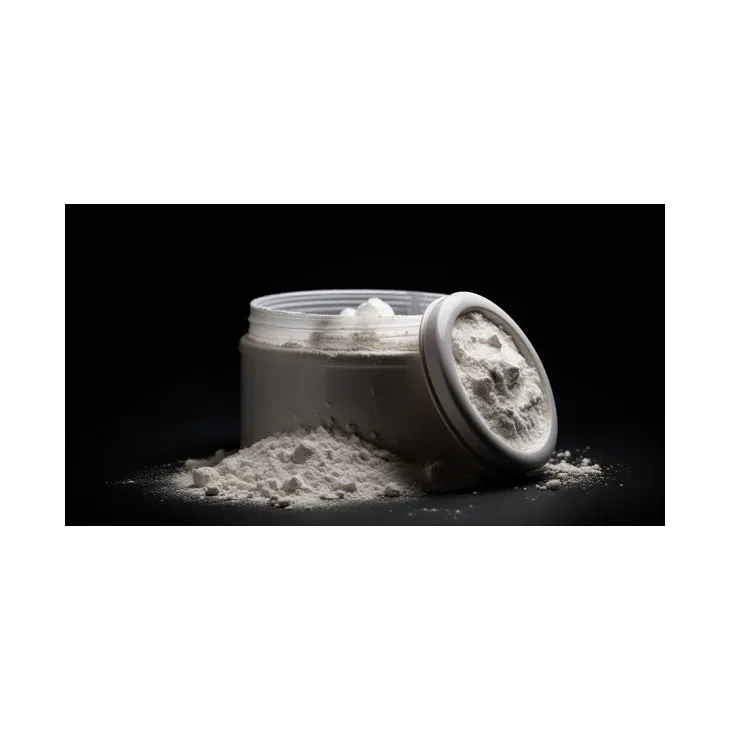- 0086-571-85302990
- sales@greenskybio.com
how to make plant extracts
2023-09-26
1. Importance of Plant Extracts
1. Importance of Plant Extracts
Plant extracts have been a cornerstone of human civilization for thousands of years, playing a pivotal role in traditional medicine, food, and cosmetics. The importance of plant extracts is multifaceted, encompassing both their practical applications and their potential for future discoveries.
Medicinal Value: One of the most significant aspects of plant extracts is their medicinal properties. Many modern drugs are derived from plant compounds, such as aspirin from willow bark and morphine from the opium poppy. Plant extracts are rich in bioactive compounds like alkaloids, flavonoids, and terpenes, which have been found to possess anti-inflammatory, antimicrobial, and antioxidant properties.
Cosmetic and Skincare Applications: In the cosmetics industry, plant extracts are used for their skin-soothing, moisturizing, and anti-aging effects. They are often preferred over synthetic ingredients due to their natural origin and the belief that they are gentler on the skin.
Food and Beverage Industry: Plant extracts are widely used to add flavor, color, and nutritional value to various food and beverage products. They can be found in everything from spices and condiments to functional beverages and dietary supplements.
Agricultural Uses: In agriculture, plant extracts are used as natural pesticides and growth promoters, offering a more environmentally friendly alternative to synthetic chemicals.
Environmental Benefits: Plant extracts can serve as a sustainable and renewable resource, reducing the reliance on petroleum-based products and contributing to a circular economy.
Research and Development: The study of plant extracts is an ongoing field of research, with scientists continually discovering new compounds and applications. This research is crucial for developing new pharmaceuticals, understanding plant defense mechanisms, and exploring the potential of plants in addressing global health and environmental challenges.
Cultural and Historical Significance: Plant extracts are deeply rooted in the cultural and historical practices of many societies, representing a connection to traditional knowledge and indigenous wisdom.
In summary, the importance of plant extracts lies in their versatility and potential, offering solutions to various contemporary challenges while also preserving the rich heritage of traditional uses. As we delve deeper into the world of plant extracts, we uncover a treasure trove of natural compounds with the power to enhance health, enrich lives, and contribute to a sustainable future.
2. Types of Plant Extracts
2. Types of Plant Extracts
Plant extracts are derived from various parts of plants, including leaves, roots, stems, flowers, and fruits. They are used in a wide range of applications, from pharmaceuticals and cosmetics to food and beverages. Here, we explore the different types of plant extracts and their unique properties:
1. Tinctures: These are alcoholic extracts made by soaking plant material in a high-proof alcohol solution. Tinctures are often used for medicinal purposes due to their ability to preserve the active compounds of the plant.
2. Infusion: An infusion is created by steeping plant material in hot water. This method is commonly used for making herbal teas and extracting milder compounds that are sensitive to heat.
3. Decoction: Similar to an infusion, a decoction involves boiling plant material, typically roots, bark, or seeds, in water. This method is used for more robust plant materials that require more heat to release their compounds.
4. Essential Oils: These are highly concentrated volatile oils extracted from plants, often through steam distillation. Essential oils are used in aromatherapy, cosmetics, and for their therapeutic properties.
5. Cold Pressed Oils: Obtained by pressing plant material at low temperatures, these oils retain the nutritional and aromatic properties of the plant. They are commonly used in cooking and skincare.
6. Supercritical Fluid Extracts: This advanced method uses supercritical fluids, typically carbon dioxide, to extract compounds. It's known for its efficiency and the ability to extract a wide range of compounds without the use of heat or solvents.
7. Powdered Extracts: These are dried and ground plant materials that can be easily mixed into various formulations. They are used in dietary supplements and other applications where a concentrated form of the plant is needed.
8. Glycerites: Glycerites are made by combining glycerin with plant material. They are often used for their moisturizing properties and are suitable for those who cannot consume alcohol.
9. Vinegar Infusion: Similar to a tincture but using vinegar instead of alcohol, these extracts are used for their preservative qualities and are often used in folk medicine.
10. Solid Extracts: These are concentrated forms of plant extracts that have had most of the solvent removed, resulting in a solid or semi-solid product.
Each type of plant extract has its own set of advantages and is chosen based on the desired application and the specific compounds that need to be extracted. Understanding the different types of extracts is crucial for selecting the right method for your needs.
3. Equipment and Materials Needed
3. Equipment and Materials Needed
To successfully make plant extracts, you will need a variety of equipment and materials to ensure a safe, efficient, and effective extraction process. Here is a list of the essential items you should consider having on hand:
1. Fresh Plant Material: The starting point for any plant extract is the plant itself. Choose fresh, healthy, and pesticide-free plants for the best results.
2. Distilled Water: Used for diluting and extracting the active compounds from the plant material.
3. Alcohol (Ethanol or Isopropyl): A common solvent for extracting oils and resins from plants, especially for making tinctures.
4. Glassware: Beakers, flasks, and graduated cylinders for measuring and mixing solutions.
5. Stirring Rods: For mixing solutions and ensuring even distribution of plant material.
6. Cheesecloth or Filter Paper: To strain the plant material and separate the liquid extract from the solid residue.
7. Funnel: To assist in transferring liquids without spillage, especially during filtration.
8. Glass Jars or Bottles: For storing the finished plant extracts. Dark glass is preferable to protect the extract from light.
9. Scale: An accurate scale to measure the weight of plant material and other ingredients.
10. Glass Dropper or Pipette: For precise dispensing of the extract, especially when diluting or applying the extract.
11. Heat Source: A stove or hot plate for heating the extraction mixture, if necessary.
12. Cooling Rack: To cool down the extraction mixture before filtration.
13. Refrigerator or Freezer: For cooling the extract during the extraction process, especially when using the cold maceration method.
14. Pestle and Mortar: For crushing and grinding plant material to increase the surface area for better extraction.
15. Vacuum Pump: For creating a vacuum in a vacuum filtration setup to speed up the filtration process.
16. Separatory Funnel: For separating immiscible liquids during the purification process.
17. Safety Equipment: Gloves, goggles, and a lab coat to protect yourself from potential hazards during the extraction process.
18. Preservation Agents: Glycerin, vitamin E, or other preservatives to extend the shelf life of the plant extract.
19. pH Meter: To measure the acidity or alkalinity of the extract, which can affect its stability and effectiveness.
20. Notebook and Pen: For recording the extraction process, observations, and results for future reference and improvement.
Having these materials and equipment ready will set you up for a successful plant extraction process. Remember that the specific requirements may vary depending on the type of plant extract you are aiming to produce and the extraction technique you choose to employ.
4. Selecting the Right Plant Material
4. Selecting the Right Plant Material
Selecting the right plant material is a crucial step in the process of making plant extracts. The choice of plant material can significantly impact the quality, potency, and effectiveness of the final product. Here are some key considerations when selecting the right plant material for extraction:
Species and Plant Part: Different plant species and parts (leaves, roots, flowers, fruits, seeds, or bark) contain different bioactive compounds. It is essential to choose the plant species and part that is known to contain the desired compounds.
Growth Conditions: The environment in which the plant is grown can affect the concentration and types of compounds present in the plant material. Factors such as soil quality, climate, and exposure to sunlight can all influence the plant's chemical composition.
Harvesting Time: The time of harvest can be critical, as the concentration of bioactive compounds may vary depending on the plant's growth stage. Some compounds may be more abundant during certain seasons or at specific times of the day.
Purity and Contamination: The plant material should be free from contaminants such as pesticides, heavy metals, and other harmful substances. Organic or wild-harvested plants are often preferred for this reason.
Maturity and Health of the Plant: Healthy and mature plants are more likely to produce higher-quality extracts. Signs of disease or stress can indicate that the plant is not suitable for extraction.
Sourcing: Reliable sourcing is important to ensure the authenticity and quality of the plant material. It is advisable to work with reputable suppliers or to cultivate the plants yourself if possible.
Sustainability: Consider the sustainability of the plant material. Choose plants that are grown and harvested in a way that does not deplete natural resources or harm the environment.
Legal and Ethical Considerations: Some plants may be protected by conservation laws or may be harvested in ways that are ethically questionable. It is important to ensure that the plant material is sourced legally and ethically.
By carefully selecting the right plant material, you can ensure that your plant extracts are of the highest quality and most suitable for their intended applications. The next steps in the process will build upon this foundation, further refining the extract to achieve the desired outcome.
5. Preparation of Plant Material
5. Preparation of Plant Material
The preparation of plant material is a crucial step in the process of making plant extracts. Proper preparation ensures that the extraction process is efficient and that the final product is of high quality. Here are the steps involved in preparing plant material for extraction:
5.1. Collection and Identification
- Begin by collecting the plant material from a reliable source. Ensure that the plant is accurately identified to avoid any confusion with similar species that may have different properties or even be toxic.
- Consider the time of year and the part of the plant to be used, as these factors can affect the concentration of active compounds.
5.2. Cleaning
- Thoroughly wash the plant material to remove dirt, debris, and potential contaminants. Use clean water and avoid using any chemicals that could affect the extraction process.
5.3. Drying
- Dry the plant material to reduce moisture content, which helps prevent the growth of mold and bacteria during storage and extraction.
- Use a method such as air-drying, oven-drying, or using a dehydrator. The drying method should not degrade the active compounds in the plant material.
5.4. Crushing or Grinding
- Once the plant material is dry, crush or grind it into smaller pieces to increase the surface area for better extraction.
- Use a mortar and pestle, coffee grinder, or a specialized grinding machine, depending on the quantity and type of plant material.
5.5. Sorting and Sieving
- Sort through the crushed plant material to remove any unwanted parts, such as stems or leaves, if only specific parts are required for the extraction.
- Sieve the material to achieve a consistent particle size, which can improve the efficiency of the extraction process.
5.6. Storage
- Store the prepared plant material in a cool, dry, and dark place to maintain its quality and prevent degradation of the active compounds.
- Use airtight containers to protect the material from moisture and light, which can cause oxidation and spoilage.
5.7. Documentation
- Keep a record of the plant species, collection location, date of collection, and any other relevant information.
- This documentation is essential for traceability and quality control purposes.
Proper preparation of plant material is essential for successful extraction of the desired compounds. By following these steps, you can ensure that your plant extracts are of high quality and safe for their intended applications.
6. Extraction Techniques
6. Extraction Techniques
Extraction techniques are the core processes in making plant extracts, and they can vary significantly depending on the type of plant material and the desired end product. Here are some common extraction methods used in the preparation of plant extracts:
1. Maceration:
- This is a simple and traditional method where the plant material is soaked in a solvent, often water or alcohol, for an extended period.
- The plant material is placed in a container, and the solvent is added to cover it completely.
- The mixture is left to stand, allowing the solvent to penetrate the plant tissues and dissolve the desired compounds.
2. Infusion:
- Similar to maceration but typically involves heating the plant material in the solvent, usually water.
- The plant material is steeped in hot water, and the heat helps to release the active compounds into the water.
3. Decoction:
- This method is used for harder plant materials like roots, barks, and seeds.
- The plant material is boiled in water, and the heat extracts the compounds more aggressively than in infusion.
4. Cold Pressing:
- Used primarily for extracting oils from fruits like olives and citrus.
- The plant material is pressed without heat to extract the oil, preserving the integrity of the compounds.
5. Steam Distillation:
- Particularly useful for extracting volatile compounds, such as essential oils, from aromatic plants.
- The plant material is heated with steam, and the vapors containing the volatile compounds are collected and condensed back into a liquid.
6. Solvent Extraction:
- Involves using organic solvents like hexane, ethanol, or acetone to dissolve the plant compounds.
- The solvent is evaporated, leaving behind a concentrated extract.
7. Supercritical Fluid Extraction (SFE):
- A modern technique that uses supercritical fluids, typically carbon dioxide, to extract compounds at high pressure and temperature.
- This method is efficient and can yield high-quality extracts without using heat or organic solvents.
8. Ultrasonic-Assisted Extraction (UAE):
- Utilizes ultrasonic waves to disrupt plant cell walls, allowing for more efficient extraction of the desired compounds.
- This method is fast and can improve the yield and quality of the extract.
9. Microwave-Assisted Extraction (MAE):
- Uses microwave energy to heat the plant material and solvent, accelerating the extraction process.
- This method is efficient and can be more selective in extracting certain compounds.
10. Enzymatic Extraction:
- Involves the use of enzymes to break down plant cell walls and release the compounds.
- This method can be gentle and selective, preserving the integrity of sensitive compounds.
Each extraction technique has its advantages and limitations, and the choice of method depends on the specific plant material, the target compounds, and the desired purity and yield of the extract. It's also important to consider the environmental impact and safety of the extraction process when selecting a method.
7. Purification and Filtration
7. Purification and Filtration
Purification and filtration are critical steps in the process of making plant extracts, ensuring the final product is free from impurities and has a consistent quality. Here's how to effectively purify and filter your plant extracts:
7.1 Understanding the Need for Purification
- Purification is essential to remove unwanted compounds, such as chlorophyll, waxes, and other non-active substances that may affect the efficacy or safety of the extract.
- Filtration helps in separating the soluble active components from insoluble particles.
7.2 Common Filtration Techniques
- Gravity Filtration: This is a simple method where the liquid is allowed to pass through a filter paper or cloth under the influence of gravity.
- Vacuum Filtration: Using a vacuum to speed up the filtration process, which is particularly useful for removing air bubbles and speeding up the process.
- Membrane Filtration: Utilizing semipermeable membranes to separate components based on their size.
7.3 Choosing the Right Filter
- The choice of filter depends on the particle size you need to remove and the nature of your extract. Common filters include filter papers, cloth filters, and mesh sieves.
7.4 Purification Methods
- Precipitation: Adding a reagent to precipitate unwanted substances, which can then be separated by filtration.
- Adsorption: Using activated charcoal or other adsorbents to bind and remove impurities.
- Distillation: Separating components based on their boiling points, useful for volatile compounds.
7.5 Centrifugation
- For extracts with very fine particles, centrifugation can be used to separate the solid particles from the liquid extract.
7.6 Quality Control
- After filtration, it's important to test the purity of the extract using techniques such as high-performance liquid chromatography (HPLC) or gas chromatography (GC).
7.7 Sterilization
- If the extract is to be used in sensitive applications, sterilization may be necessary to eliminate any microbial contamination.
7.8 Drying
- Once purified, the extract may need to be dried to remove residual solvents or water, which can be done using rotary evaporators, freeze-drying, or lyophilization.
7.9 Documentation
- Keep detailed records of all purification and filtration steps, including the type of filter used, the conditions of the process, and the results of any quality control tests.
7.10 Troubleshooting
- If the extract remains impure, consider adjusting the pH, temperature, or pressure of the process, or using a different type of filter.
By carefully following purification and filtration protocols, you can ensure that your plant extracts are of the highest quality, suitable for a wide range of applications.
8. Preservation and Storage
8. Preservation and Storage
Proper preservation and storage are crucial for maintaining the integrity and potency of plant extracts. The methods used for preservation can vary depending on the type of extract and its intended use. Here are some general guidelines for preserving and storing plant extracts:
1. Storage Conditions: Plant extracts should be stored in a cool, dark, and dry place. Exposure to heat, light, and moisture can degrade the active compounds and reduce the effectiveness of the extract.
2. Airtight Containers: Use airtight containers to prevent contamination and exposure to air, which can lead to oxidation and spoilage.
3. Refrigeration: Some plant extracts may require refrigeration to maintain their stability. Check the specific requirements for the type of extract you have.
4. Freezing: For long-term storage, freezing can be an effective method to preserve the quality of certain plant extracts.
5. Desiccation: Removing moisture from the extract can help prevent the growth of mold and bacteria. This can be done by drying the extract or using a desiccant.
6. Antimicrobial Agents: In some cases, adding a small amount of an antimicrobial agent can help preserve the extract. However, this should be done with caution and only when necessary, as it can affect the purity of the extract.
7. Labeling: Clearly label all containers with the name of the plant extract, the date of preparation, and any other relevant information. This helps in tracking the age and usage of the extracts.
8. Batch Tracking: Keep a record of each batch of plant extract, including the source of the plant material, the date of extraction, and any other details that could affect the quality and consistency of the product.
9. Regular Checks: Regularly check the condition of stored plant extracts for any signs of spoilage or degradation. Discard any extracts that show signs of spoilage.
10. Regulatory Compliance: Ensure that your preservation and storage methods comply with any relevant regulations and guidelines, especially if the plant extracts are intended for commercial use or sale.
By following these guidelines, you can help ensure that your plant extracts remain potent and effective for their intended use. Proper preservation and storage not only protect the quality of the extracts but also contribute to the safety and efficacy of any products or treatments that incorporate them.
9. Applications of Plant Extracts
9. Applications of Plant Extracts
Plant extracts have a wide range of applications across various industries due to their diverse chemical compositions and biological activities. Here are some of the key applications:
1. Pharmaceutical Industry:
Plant extracts are widely used in the development of new drugs and traditional medicines. They serve as sources of bioactive compounds with potential therapeutic properties, such as anti-inflammatory, analgesic, and antimicrobial agents.
2. Cosmetics and Personal Care:
In the cosmetics industry, plant extracts are valued for their natural fragrance, skin conditioning properties, and potential anti-aging effects. They are used in creams, lotions, shampoos, and other personal care products.
3. Food and Beverage Industry:
Flavorings, colorings, and preservatives derived from plant extracts are common in the food and beverage industry. They add natural taste and color to various products, enhancing consumer appeal.
4. Agriculture:
Plant extracts are used as natural pesticides and growth promoters in agriculture. Some extracts have insecticidal or repellent properties, while others can stimulate plant growth and improve crop yields.
5. Perfumery:
Essential oils and other volatile compounds extracted from plants are used in the creation of perfumes and fragrances. These natural scents are sought after for their unique and complex aroma profiles.
6. Nutraceuticals:
Plant extracts are incorporated into dietary supplements and functional foods for their health-promoting properties. They may contain antioxidants, vitamins, and other nutrients that contribute to overall health and well-being.
7. Dyes and Pigments:
Natural dyes extracted from plants have been used for centuries in textile dyeing and are experiencing a resurgence due to their eco-friendly nature and unique color palette.
8. Environmental Remediation:
Some plant extracts have the ability to absorb or neutralize pollutants, making them useful in environmental cleanup efforts, such as soil remediation and water treatment.
9. Research and Development:
Plant extracts are a rich source of compounds for scientific research, particularly in the fields of pharmacology, biochemistry, and molecular biology. They are used to study biological processes and develop new therapeutic agents.
10. Cultural and Traditional Uses:
Many cultures have traditional uses for plant extracts, ranging from religious ceremonies to local medicine practices. These uses often reflect a deep understanding of the plants' properties that has been passed down through generations.
The versatility of plant extracts underscores their importance in both traditional and modern applications. As research continues to uncover new properties and uses, the demand for plant-based products is likely to grow, emphasizing the need for sustainable and ethical sourcing practices.
10. Safety Precautions
10. Safety Precautions
When working with plant extracts, safety should be a top priority. Here are some important precautions to consider:
1. Personal Protective Equipment (PPE): Always wear appropriate PPE, including gloves, safety goggles, and a lab coat or apron to protect your skin and eyes from potential irritants or allergens.
2. Ventilation: Ensure that your workspace is well-ventilated to avoid inhaling any potentially harmful fumes or dust from the plant material.
3. Handling Toxic Plants: Some plants are toxic and can cause harm if ingested or if they come into contact with your skin. Always research the plant you are working with and take necessary precautions.
4. Chemical Safety: If you are using any chemicals in the extraction process, make sure to follow the manufacturer's instructions and handle them with care. Store chemicals in a secure location away from heat and direct sunlight.
5. Disposal: Dispose of plant waste and any other materials properly. Do not pour chemicals down the drain or throw them in regular trash. Check local regulations for proper disposal methods.
6. First Aid: Keep a first aid kit handy and know basic first aid procedures. In case of skin contact, rinse the area with plenty of water and seek medical attention if necessary.
7. Training: If you are new to the process of making plant extracts, consider taking a course or receiving training from an expert to ensure you understand the process and potential risks.
8. Emergency Procedures: Familiarize yourself with emergency procedures in case of a spill, fire, or other accidents.
9. Storage: Store your plant extracts in a cool, dark place away from direct sunlight and heat. Some extracts may need to be stored in a refrigerator to maintain their potency.
10. Labeling: Clearly label all containers with the name of the plant extract, the date of preparation, and any other relevant information. This will help prevent confusion and potential misuse.
By following these safety precautions, you can minimize risks and ensure that your work with plant extracts is safe and effective. Always remember that safety should never be compromised for the sake of convenience or speed.
11. Conclusion and Future Perspectives
11. Conclusion and Future Perspectives
In conclusion, plant extracts offer a wealth of benefits and applications, from medicinal and therapeutic uses to cosmetic and food industries. The process of making plant extracts, while requiring careful selection, preparation, and extraction techniques, can be a rewarding endeavor for those interested in harnessing the power of nature.
The future of plant extracts looks promising, with ongoing research into new extraction methods and the discovery of novel bioactive compounds. Innovations in nanotechnology, for example, may enable more efficient extraction and delivery of plant-derived compounds. Additionally, the growing interest in natural products and the push for sustainable practices will likely drive further development in this field.
As we continue to explore the potential of plant extracts, it is crucial to approach this field with respect for the environment and the plants themselves. Sustainable harvesting practices and the responsible use of plant resources will be key to ensuring the longevity of this valuable resource.
Furthermore, the integration of traditional knowledge with modern scientific methods can lead to a deeper understanding of plant extracts and their applications. This fusion of wisdom can pave the way for new discoveries and innovative uses of plant extracts.
In summary, the art and science of making plant extracts is a fascinating and ever-evolving field. With continued research, innovation, and responsible practices, plant extracts will undoubtedly continue to play a vital role in various industries and contribute to the well-being of both humans and the environment.
- ▶ Hesperidin
- ▶ Citrus Bioflavonoids
- ▶ Plant Extract
- ▶ lycopene
- ▶ Diosmin
- ▶ Grape seed extract
- ▶ Sea buckthorn Juice Powder
- ▶ Fruit Juice Powder
- ▶ Hops Extract
- ▶ Artichoke Extract
- ▶ Mushroom extract
- ▶ Astaxanthin
- ▶ Green Tea Extract
- ▶ Curcumin
- ▶ Horse Chestnut Extract
- ▶ Other Product
- ▶ Boswellia Serrata Extract
- ▶ Resveratrol
- ▶ Marigold Extract
- ▶ Grape Leaf Extract
- ▶ New Product
- ▶ Aminolevulinic acid
- ▶ Cranberry Extract
- ▶ Red Yeast Rice
- ▶ Red Wine Extract
-
Hops Extract
2023-09-26
-
Citrus Aurantii Extract
2023-09-26
-
Lily extract
2023-09-26
-
Camu Camu Extract
2023-09-26
-
American Ginseng Root Extract
2023-09-26
-
Lotus leaf extract
2023-09-26
-
Curcumin Extract
2023-09-26
-
Pueraria Lobata Extract
2023-09-26
-
Cocoa Extract
2023-09-26
-
Aminolevulinic acid
2023-09-26











